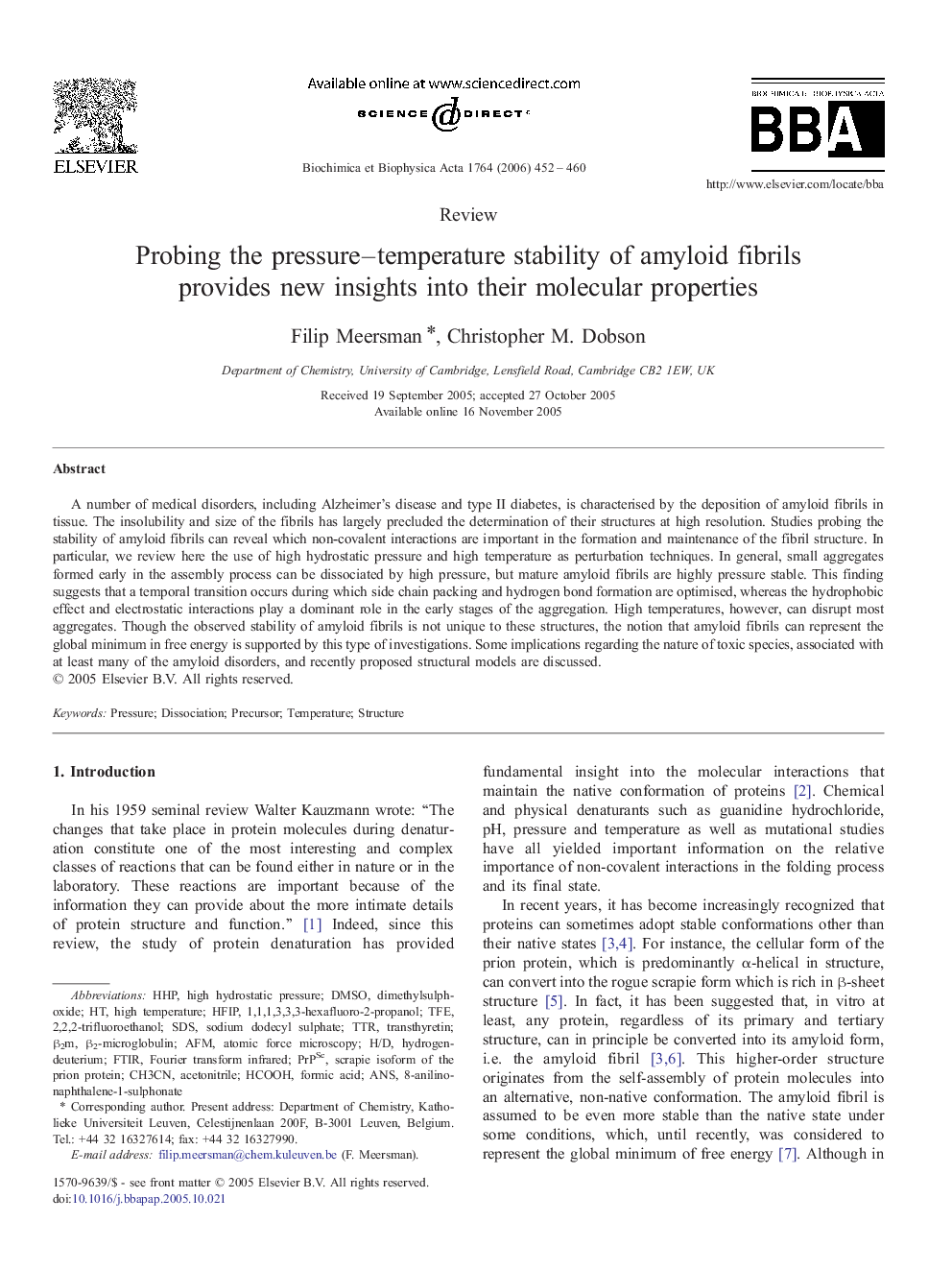| Article ID | Journal | Published Year | Pages | File Type |
|---|---|---|---|---|
| 1178655 | Biochimica et Biophysica Acta (BBA) - Proteins and Proteomics | 2006 | 9 Pages |
A number of medical disorders, including Alzheimer's disease and type II diabetes, is characterised by the deposition of amyloid fibrils in tissue. The insolubility and size of the fibrils has largely precluded the determination of their structures at high resolution. Studies probing the stability of amyloid fibrils can reveal which non-covalent interactions are important in the formation and maintenance of the fibril structure. In particular, we review here the use of high hydrostatic pressure and high temperature as perturbation techniques. In general, small aggregates formed early in the assembly process can be dissociated by high pressure, but mature amyloid fibrils are highly pressure stable. This finding suggests that a temporal transition occurs during which side chain packing and hydrogen bond formation are optimised, whereas the hydrophobic effect and electrostatic interactions play a dominant role in the early stages of the aggregation. High temperatures, however, can disrupt most aggregates. Though the observed stability of amyloid fibrils is not unique to these structures, the notion that amyloid fibrils can represent the global minimum in free energy is supported by this type of investigations. Some implications regarding the nature of toxic species, associated with at least many of the amyloid disorders, and recently proposed structural models are discussed.
